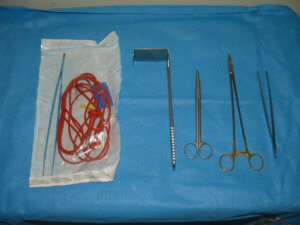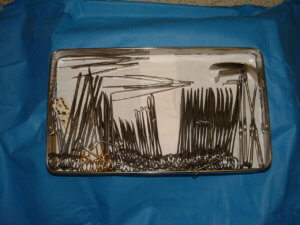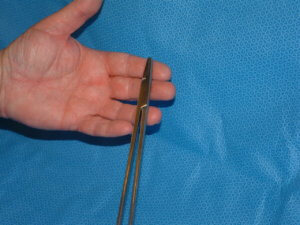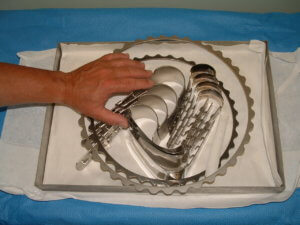Surgery for Ectopic Pregnancy
Mr Lawson Tait first became interested in ectopic pregnancy in the early 1880s, when he was present at a post mortem which confirmed that the death was due to haemorrhage from an ectopic pregnancy. This case convinced him that it might be possible to operate on a woman with an ectopic pregnancy and save her life. In 1883 he performed one of the first successful operations for ectopic pregnancy. The diagnosis was made by laparotomy and the operation performed was salpingectomy. This remained the corner stone of treatment until the early 1970s.

Laparoscopy became popular in the early 1970s and soon became the diagnostic tool for ectopic pregnancy. Patients with suspected ectopic pregnancy were laparoscoped to confirm the diagnosis. The patients then underwent laparotomy and open salpingectomy. In the mid to late 1990s there were great advances in laparoscopy. These included high powered light sources, high resolution cameras, smaller laparoscopes and the development of laparoscopic instruments. There was then a trend towards laparoscopic surgery for ectopic pregnancy. The advantage of laparoscopic surgery soon became apparent in terms of shorter hospital stay and quicker recovery. The choices of operation for ectopic pregnancy are the same in both open and laparoscopic surgery: partial or total salpingectomy, linear salpingostomy or ‘milking out’.

The Royal College of Obstetricians and Gynaecologists (RCOG) has produced guidelines on the surgical management of ectopic pregnancy, suggesting that up to 80% of cases should be suitable for laparoscopic surgery. Guidelines have been drawn up as to which operations should be performed. If the rest of the pelvis is normal, salpingectomy is the procedure of choice; if the other side is abnormal, linear salpingostomy should be considered. Due to the higher incidence of recurrent trophoblastic tissue, necessitating further surgery, RCOG advises against ‘milking out’ the tubal pregnancy.

The college has also stressed the importance of adequate training in both diagnostic laparoscopy and operative laparoscopy. There have indeed been cases of maternal mortality associated with diagnostic laparoscopy.

It is important to remember the advantages and disadvantages of laparoscopic surgery:
Laparoscopic Surgery.The surgery usually takes longer, although hospital stay and recovery are shorter, and there are also less abdominal scars. The downside of laparoscopic surgery includes a higher rate of recurrent trophoblastic tissue requiring re-operation.
Open Surgery.The operation time tends to be shorter and more gynaecologists are skilled in laparotomy. The downside includes longer hospital stay and a larger scar on the abdomen.
No matter what surgery is performed, it is important to remember that whether the patient has laparoscopic or open surgery, and whether the surgery is radical (salpingectomy) or conservative (linear salpingostomy) the eventual ‘take home baby rate’ is the same.
Figure 1: Leaking R ectopic pregnancy
In minimal assess surgery there are a number of different ways of performing both salpingectomy or linear salpingostomy. Salpingectomy, partial or complete, can be performed using suture loops or bi or tri-polar diathermy. Linear salpingostomy can be performed by either point diathermy or diathermy scissors. Linear salpingectomy is considered to be the most challenging operation for ectopic pregnancy.
The choice depends on the equipment available, the set up of the theatre and the experience of the surgeons.